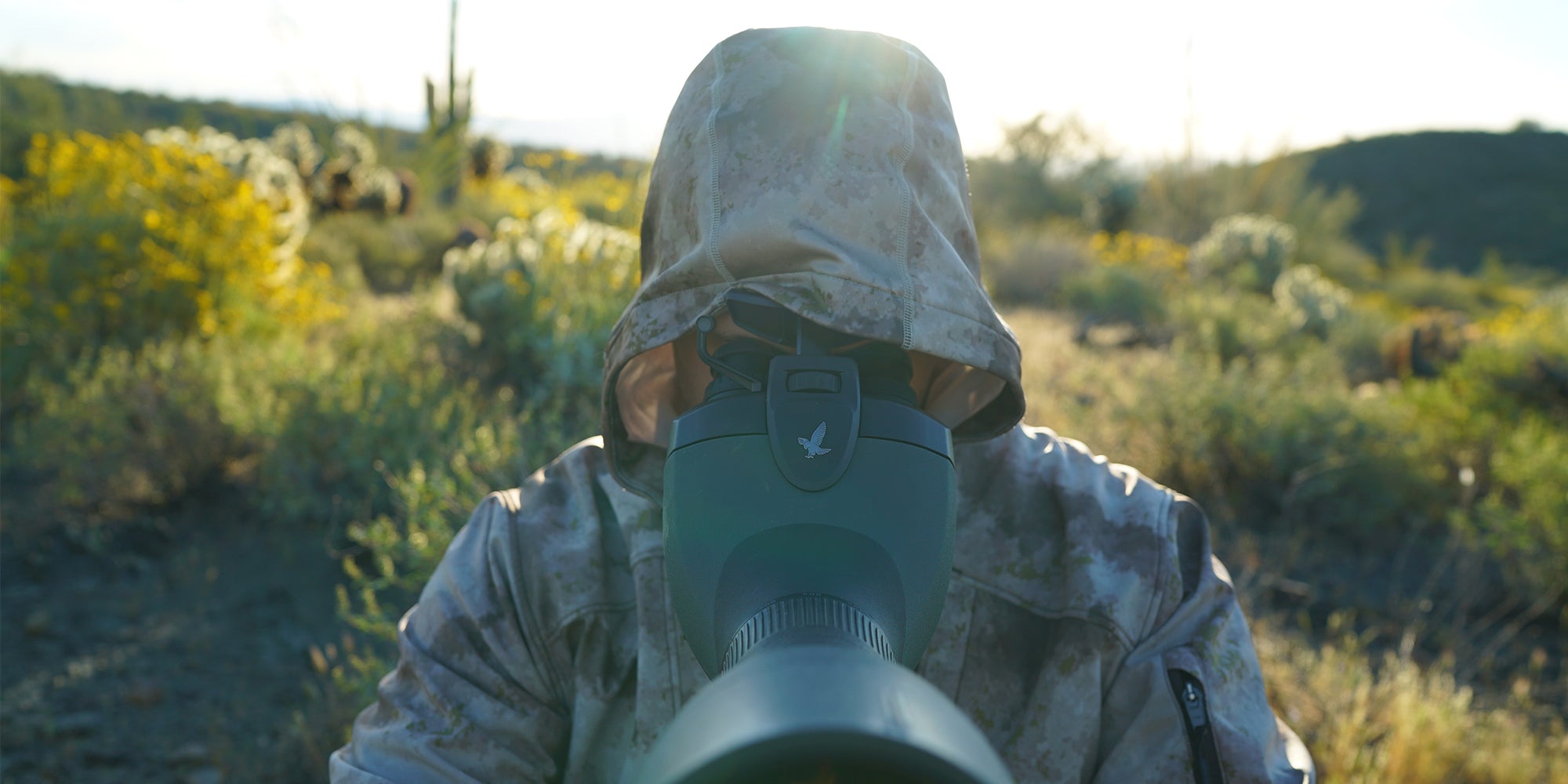all orders over $1000
Swarovski BTX vs Traditional Spotting Scope
by Levi Sopeland
So, you’ve heard about Swarovski’s mythical device called the BTX and you’re wondering if it’s worth buying?
Read on, and you’ll get an objective look at what makes this optic so special.
A spotting scope is critical for most instances of western hunting. On that, most of us will agree. In a market flooded with excellent spotter options, Swarovski’s modular spotting scope system creates an entirely new category. However, once you get the full picture and look through one, the reasons become very clear.
Binocular vs. Monocular Optics
The key general advantages of binocular over monocular optics when glassing are: Eye Fatigue, Detail Resolution, and Efficiency.
I’ll assume you’ve looked through a spotting scope before, and you know that it can be difficult to do for long periods of time. Spotting scopes have tremendous value, but eye fatigue is their one drawback. I would almost rather call this “face fatigue,” because after 10 minutes of squinting or less, I often get a cramp in my off-eye, especially in bright conditions. We have all met at least one guy who swears by his lucky spotter to find game, and to me, that guy always struck me as a little off-kilter. Sure, it’s called a spotting scope, but for most people, these optics are used more as a field-judging scope than a tool to locate game.
The difference between monocular and binocular vision might not be apparent with a 5-minute comparison, but for me, the beauty of the BTX lies in the ability to glass at 35 power for an indefinite amount of time.
A common misconception is that higher magnification=more resolution or higher-quality optics. There are plenty of 65 power scopes on the market that are really only useable at low-to-mid magnification. The detail resolution or, resolution, is not there. At full power, the magnification darkens and degrades the image to a point of incoherence.

The BTX is fixed at 30 or 35 power depending on the objective lens it’s paired with, but the resolution is so good that it’s much more valuable than extreme magnification from a lower-quality optic. Coupled with the 115mm objective lens, on the occasions I’ve used it, I found myself thinking that it was too good! I won’t waste too much time preaching about the value of top-tier optics, but I want to share one of my first experiences with the BTX and 115 mm objective. This nearly stands true for the 65mm, 85mm, and 95mm objective lenses as well.
I recall one specific day in the high desert when I would normally be using my EL 12x50s to glass ridges around 800-1200 yards away. I was fortunate enough to have the BTX 115 on a stable tripod with me and kept catching myself scanning the mountain range behind the ridges, over THREE MILES away. I can’t say whether I could field judge a coues deer at that range, but the image was so clear that I fooled myself into thinking I was glassing much closer. It was disorienting, and I could not stop myself, even though I wasn’t planning on (or, honestly, willing to) making that kind of trek that day. At 35x, you can imagine how good the resolution must be to have that happen.

Publisher of Western Hunter Magazine, Chris Denham explains the benefits of glassing with two eyes from more of a biological perspective.
"I am not a neurologist or an ophthalmologist, but I feel the answer is relatively simple from an evolutionary standpoint. God made us with two eyes, our brains are designed to handle and merge data from each source and create one complete image in the optical centers of the brain. When I look through a spotting scope with my dominant right eye and then use my left, I see two distinctly different images. But with both eyes open the brain takes qualities from both views to form a single, more complete image. I am sure there is a much more complicated medical explanation, but after over 100 days in the field with the BTX, I know the advantage and won’t leave home without it."
